The FRDC’s revamped websites will provide unprecedented access to fisheries information for diverse audiences, from consumers and fishers to researchers, traders, managers and the media
Centralising its information and data and connecting what were previously standalone websites into a suite of integrated sites is allowing the FRDC to make greater use of its resources and improve user experiences.
The shared information means that users can move easily between different content types. For example, the Fishfiles site is geared to consumers, but can take advantage of information on sustainability and catch data from the Status of Australian Fish Stocks (SAFS) Reports, which is the focus of the fish.gov.au. Consumers can also be pointed to relevant FRDC research projects, which were previously housed on the FRDC’s corporate site but were unconnected.
With the imminent upgrade to Fishfiles and the FRDC’s corporate site, frdc.com.au, all six of the FRDC’s web portals will be connected around a central pool of information. The revamped websites offer a slick new interface, which is consistent across the FRDC’s digital platforms; drawing on common sources of data ensures consistency and accuracy across all websites.
Other websites include fish.gov.au, which hosts the SAFS Reports, and fishnames.com.au – the go-to point for names officially registered under the Australian Fish Names Standard. There is also safefish.com.au, which focuses on the technical details of import and export food requirements, and carp.gov.au, the key portal for the National Carp Control Program.
“The biggest advantage of the new system,” says the FRDC’s ICT manager Kyaw Kyaw Soe Hlaing, “is the integration of disparate sources of data and content into a publicly available platform that can be targeted towards particular purposes or user groups.”
Another advantage of the new system is that information is collected once, but used multiple times. This helps to maximise efficiency for the FRDC’s small team, reduce errors and deliver targeted, relevant content across the different platforms.
Kyaw Kyaw Soe Hlaing says the new websites have been designed from the ground up with mobile devices in mind, for ease of use. All FRDC websites will be linked via the website logos on the footer of each website. Contact and subscription links are also standard across all sites.
The goal of bringing the sites together has been a clear focus for the past five years, says FRDC communications, trade and marketing manager Peter Horvat. “Linking our systems means users will be able to access all our information more easily. It is about making best use of FRDC resources,” he says.
“However, the journey for building knowledge and providing information does not stop with a new website. The FRDC is continuing to address data gaps and add key pieces of information against the species covered in the websites.”
Your guide to the FRDC’s digital platforms
frdc.com.au
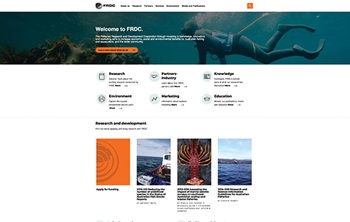
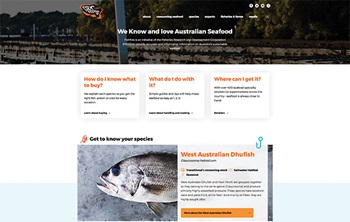
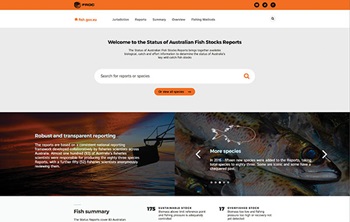
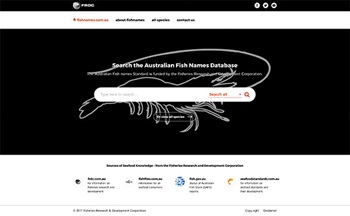

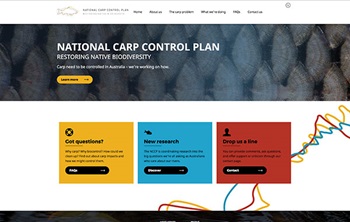 The FRDC is centralising information and data, which will be available across a suite of newly integrated websites, including FishNames, the National Carp Control Plan website and the FRDC"s own corporate website (frdc.com.au).
The FRDC is centralising information and data, which will be available across a suite of newly integrated websites, including FishNames, the National Carp Control Plan website and the FRDC"s own corporate website (frdc.com.au).The FRDC’s corporate website includes all organisational content including information about how the FRDC funds and prioritises the research it supports. It is also a portal to apply for FRDC research grants.
It has reference material about the different fishing sectors (commercial, indigenous, recreational, aquaculture and post-harvest), the environment, biosecurity, animal welfare and climate change.
All projects funded by the FRDC are now featured on frdc.com.au from the time they are funded. Once research reports are completed, these and any other associated publications or content and information on project funding are included with each project.
The FRDC is dedicated to making sure the best information is used to underpin Australia’s fisheries and aquaculture management and for the sector to have the best information upon which to base management and business decisions. In line with this, the services section has several accessible databases, including trade data, fisheries statistics and market data.
fishfiles.com.au
(new version to be launched January 2018)
The Fishfiles website is the FRDC’s one-stop shop to educate seafood consumers about the nutritional and culinary qualities of Australian seafood. In short, anything you need to know if you want to buy and cook seafood in Australia.
Sharing content with fish.gov.au and frdc.com.au will mean that information about things such as sustainability and relevant research are further integrated into this otherwise consumer-focused platform.
The FRDC is continuing to add new species to the website; at the launch there were more than 150. Along the way, the FRDC is ensuring that the content attributed to each species is consistent and more comprehensive across the range of seafood available to Australian consumers. For example, the Queensland Department of Agriculture and Fisheries is undertaking nutritional analysis of species where no data is available. Likewise, the FRDC is partnering with several chefs to get better information on lesser-known species.
fish.gov.au
In December 2016, the FRDC launched the third SAFS Reports. The fish.gov.au website now shows the status of the stocks for 83 species.
The data in the reports is the foundation of fish.gov.au, allowing for increased user interactivity. Users can dig into the details to learn more about the stocks and assessed species. This valuable source of information includes sustainability status and gear and catch data and is now integrated with the FRDC’s other platforms.
fishnames.com.au
The Australian Fish Names Standard acts as a dictionary, providing the agreed language – in this case, names for seafood species – and acting as the foundation for all species references across all of the FRDC’s resources. Agreed names are crucial to prevent confusion about species that may be known by many different names depending on where you are in Australia.
The standard includes more than 4000 Australian and imported species. The fish names website is a searchable database that allows users to search for the correct Australian standard fish name.
Each entry also includes the scientific name and an identification photo, and the Codes for Australian Aquatic Biota scientific reference.
The fish names list continues to be developed and monitored. The FRDC funds the Australian Fish Names Committee, which manages the Fish Names Standard.
safefish.com.au
An FRDC-funded initiative, SafeFish provides technical advice to support the resolution of issues and challenges relating to the export, import and domestic trade of Australian seafood products.
The SafeFish website provides resources for industry around issues such as hygiene and safety of seafood, as well as other technical barriers to trade. It includes news, updates and reports produced by SafeFish and provides a way for industry to report issues, raise concerns or ask questions. The SafeFish website also contains relevant FRDC information such as research projects and relevant FISH magazine articles.
carp.gov.au
In 2016, the Federal Government handed the FRDC the responsibility to run a research program to investigate the feasibility of the release of a virus to reduce and remove carp that infest many of Australia’s inland waterways.
Carp.gov.au details information about the scope of the National Carp Control Plan, the background to the project, and provides research and activity updates. It also provides a contact point for those wishing to find out more about the project.
FRDC Research Code: 2015-041





